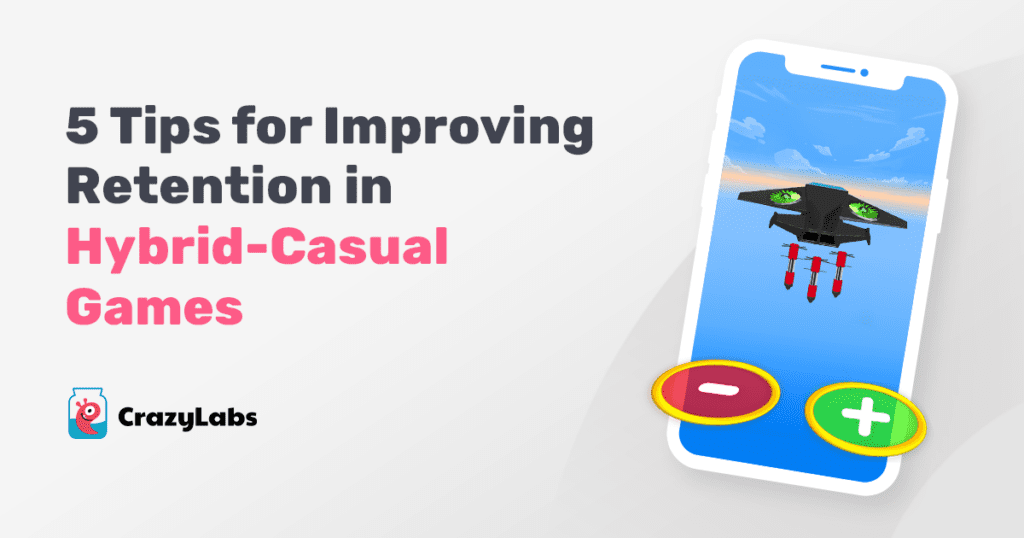With the hybrid-casual business model taking the mobile gaming industry by storm, many developers have important questions about creatives. Is there a fundamental difference in creatives for hyper and hybrid-casual games? Below, CrazyLabs’ Creative Lead answers these questions and shares her tips for nailing hybrid-casual creatives.
Hybrid Creative Basics
To begin with, it’s imperative to remember that achieving low CPI is equally important in hybrid-casual games, and that the creatives must appeal to a broad yet maximally relevant audience. Below are a few strategies, inspired by hyper-casual games, to accomplish this:
- Hyper-Casual Fundamentals: It’s important to note that the key techniques for crafting successful creatives in hyper-casual games — such as showcasing clear gameplay and a clear goal within the first 3 – 5 seconds, incorporating strong color contrast, maintaining a natural gameplay speed, and so forth — equally apply to hybrid creatives.
- Simplified Core Gameplay: The ‘classic’ strategy of recording gameplay is applicable to hybrid-casual games, with the caveat that the gameplay must remain clean, simple, and as clear as possible.
Moreover, hybrid games might seem visually more complex compared to classic hyper games given the extra mechanics, quests, pop-up upgrades, and occasionally, a slightly more intricate user interface and visuals. In such cases, having early game builds without additional add-ons or simplified marketing builds can be beneficial. Below are two examples that illustrate core gameplay in a simplified form:
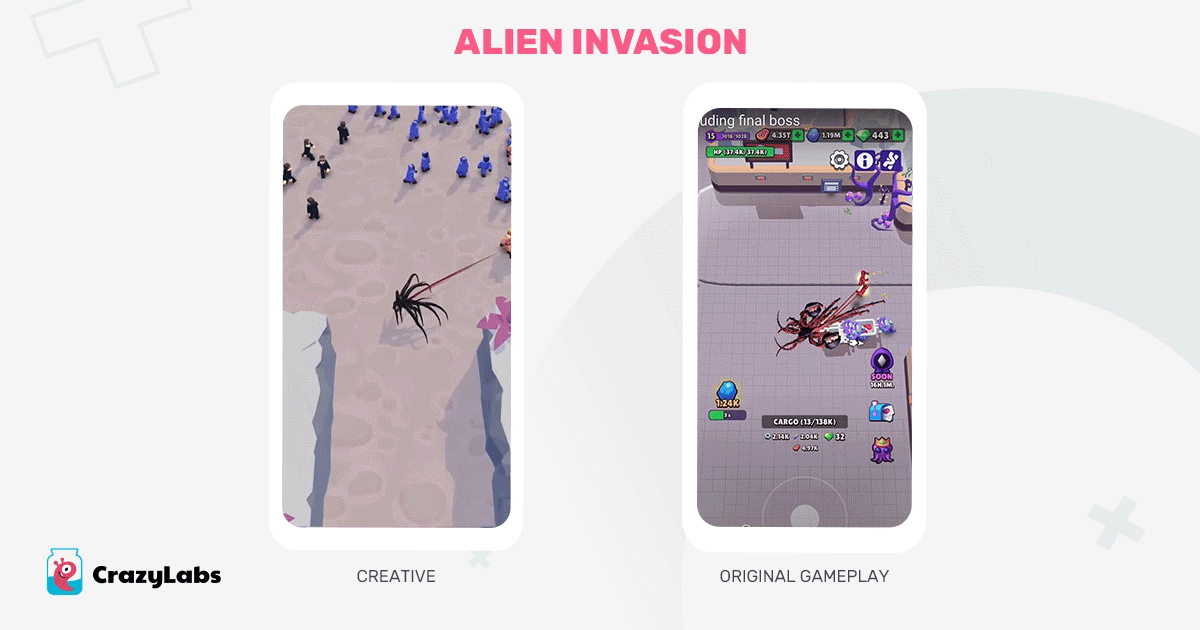
When observing this creative, it’s clear there is no proper UI, but there is a close up camera angle being used. This means that a player watching the ad can easily follow the main elements of the game (e.g., the alien, humans, enemies, and the upgrade). Whereas the original gameplay contains many additional elements (e.g., UI, radius of catching humans, joystick, etc.)
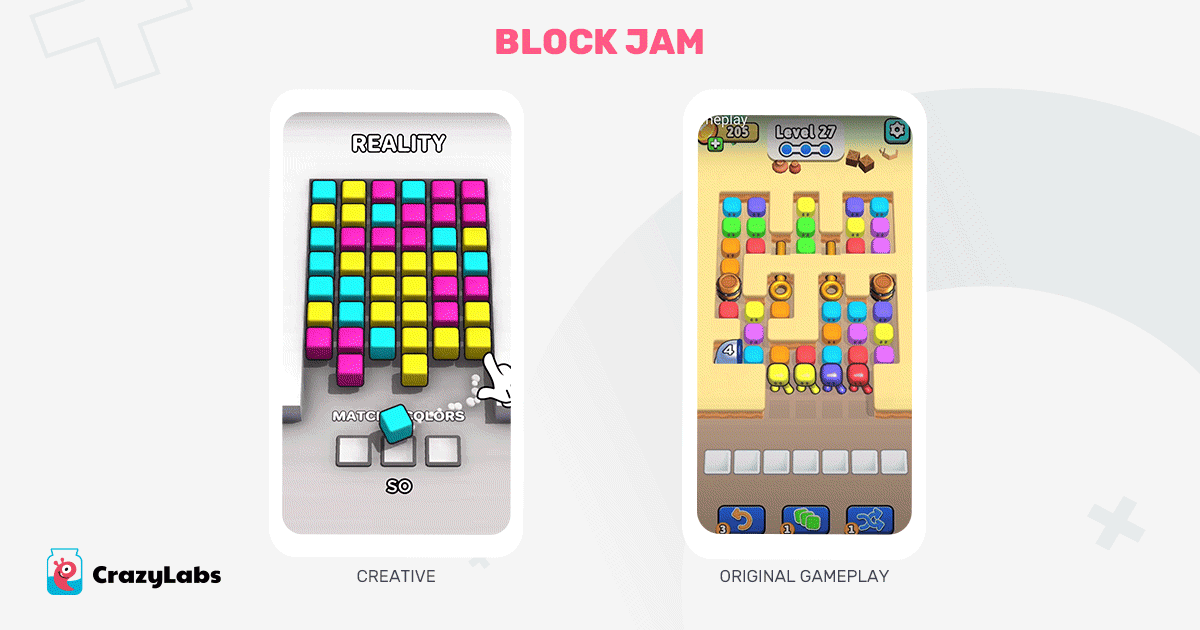
This creative is simplified in terms of visuals — there’s no UI, simple cartoon colors, specific theme or additional obstacles. Additionally, adding a tutorial hand and using fail gameplay scenarios are a solid creative strategy for puzzle games.
- Hyper-Casual Mechanics: There isn’t a proven strategy that defines which specific hyper mechanics are best suited for hybrid creatives. However, you can experiment to find the most fitting hyper mechanic for your particular game. Potential options include multiplier gates (found in runner games) or easy drawing mechanics originating from hyper puzzles or DIY games, as seen in these examples:
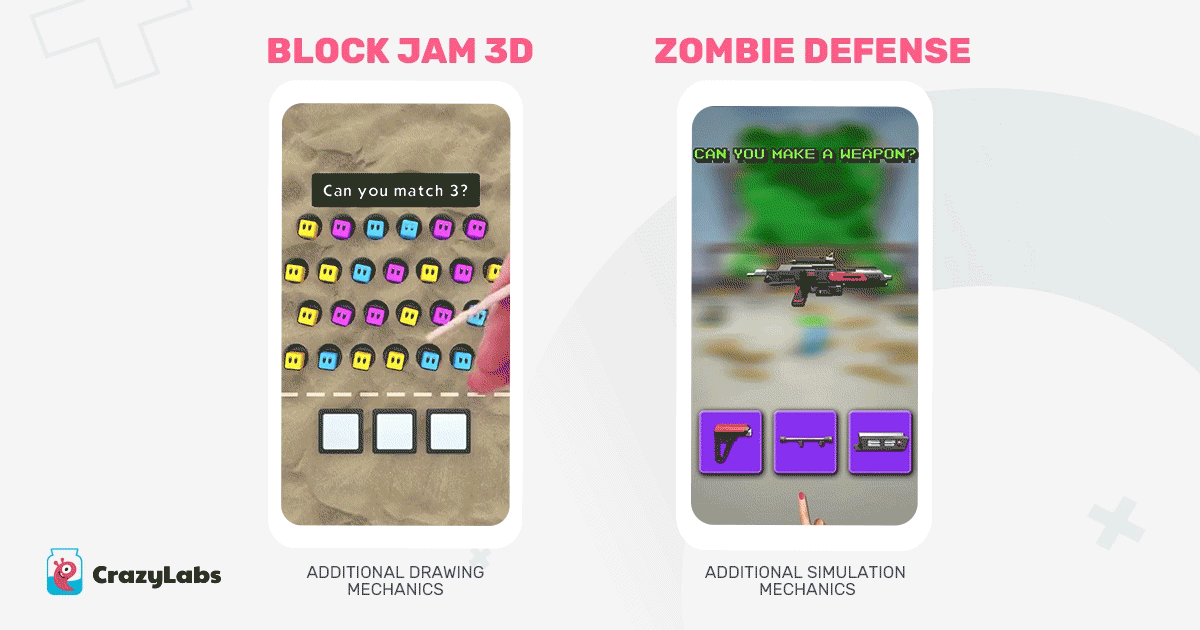
The examples above illustrate how additional mechanics from drawing or simulation games can be added to the hybrid creative strategy. The best way is to present it in a 3-5s intro and then go to the original gameplay, making sure there’s a strong correlation between the intro and the main part of the gameplay.
However, you must pursue this strategy with caution to avoid harming in-game metrics due to ‘misleading’ mechanics (in other words, mechanics that are not featured in the game). To drive the point further, if a creative is misleading, it will likely have a negative impact on the game’s KPIs. This is why it’s recommended to monitor long-term not only retention and usage actual numbers but also their ratios, IAP conversion rates, ARPPU and so on.
If you decide to experiment with an entirely new mechanic in your creative, be ready to monitor ROAS more closely. There might be two scenarios: it can be profitable when a potentially low ARPU KPI (resulting from a misleading creative) is offset by an even lower CPI, or it might not have a significantly lower CPI as required for the ARPU.
- 2D VS 3D Aesthetics: Another approach to test for hybrid creatives is simplifying the game’s aesthetics through the use of 2D effects. This will result in a more hyper-casual look, which can also help to lower the CPI. To achieve this, you can experiment with material parameters on Unity, such as Metallic and Smoothness. You can also explore the “Cartoon effect” in video editing tools like Adobe’s After Effects.

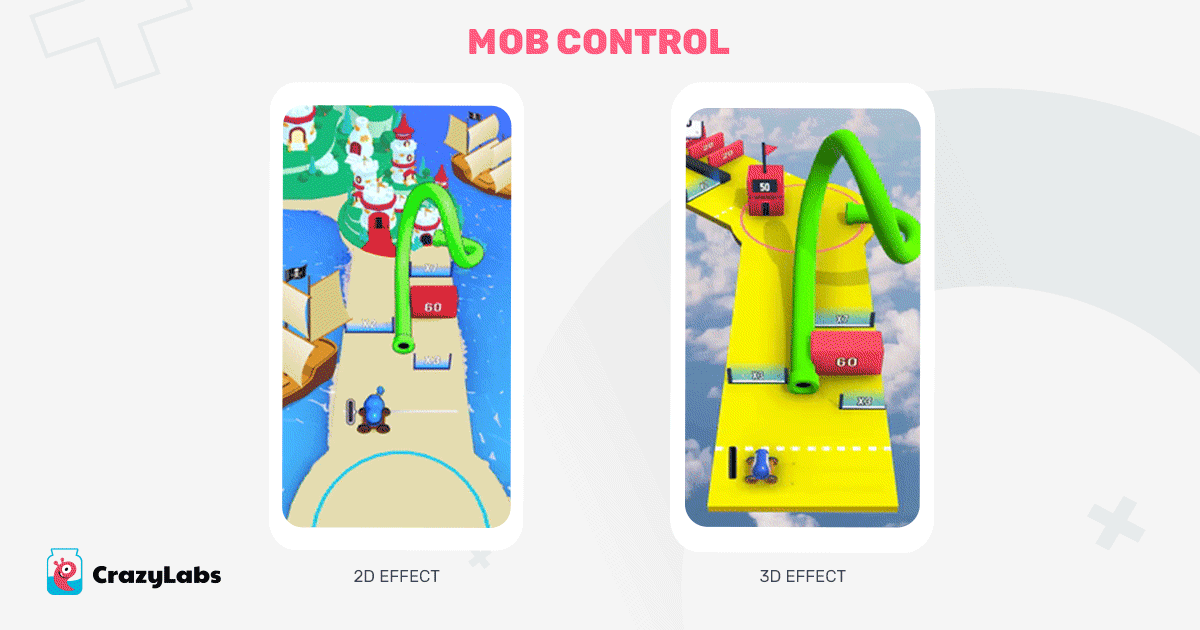
The 3D effect was likely achieved by adjusting the material parameters in Unity. Additionally, the ‘floating in air’ effect comes from the main gameplay platform standing out prominently from the animated background.
Hybrid-Casual Advanced Tips
Once you have the basics in place, below are a few advanced strategies to further experiment with.
- Incorporate Storytelling within Original Gameplay: An interesting approach for hybrid creatives is to experiment with a fully developed story that features the game’s goal, along with a step-by-step progression. This can be presented as smooth gameplay with voice-over and subtitles — providing the user with a clear understanding of on-screen events while also adding an emotional element. Alternatively, a mix of cut scenes from various parts of the gameplay can be used (as long as it avoids excessive animated transitions). Let’s take a look at the examples below that effectively illustrate this strategy:
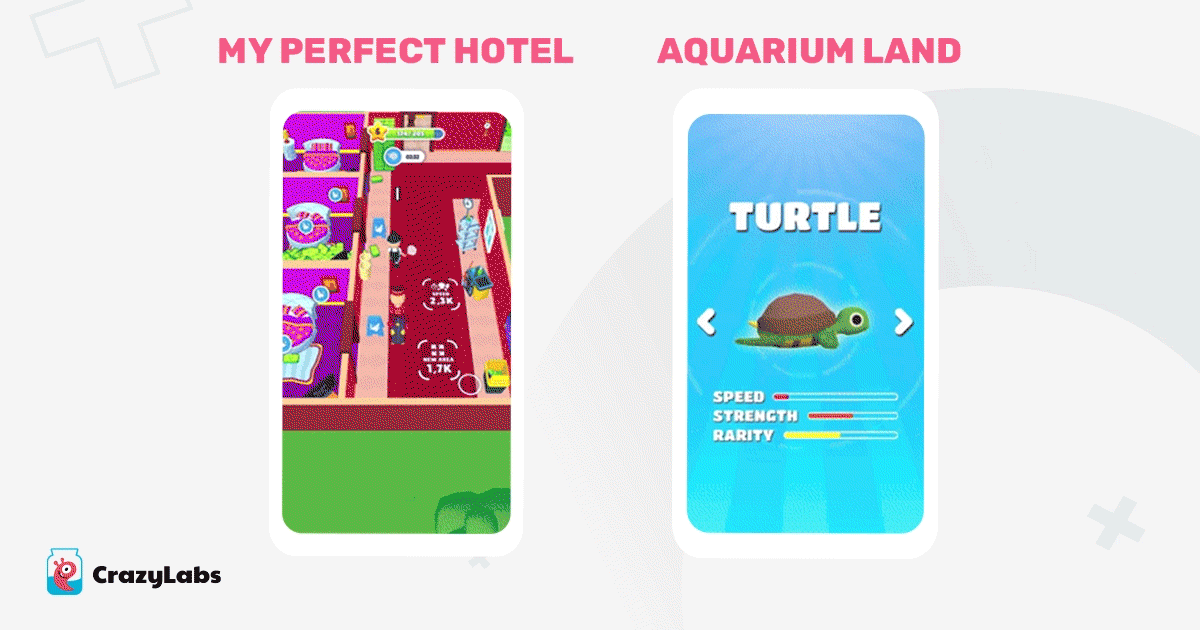
The “My Perfect Hotel” video starts by introducing the main character and location. Next, the main character explicitly shows what he has in the hotel, and how you’ll be rewarded if you manage it the right way (e.g., VIP clients, business growth, money, etc.). This is a great example as users can directly see how to progress in the game, and what they can achieve. Additionally, speaking from the main character’s perspective provides a more authentic feeling, rather than the sense of someone merely ‘selling’ the game.
The “Aquarium Land” video starts with introducing the main character and his role, and shows the different objects (e.g. the fish). It’s a solid example as it features:
- Smooth gameplay
- A step-by-step explanation of what actions to take
- Define a Clear and Understandable Goal: This idea is a continuation of the storytelling tip above. Even if we don’t use frame editing, or don’t have time to narrate a complete story before showcasing the main gameplay, you can briefly and clearly define the goal of the scenario through a short 3-5 seconds intro. This can be an intro made directly from the original gameplay (on Unity) by playing with camera movements. For example, a zoom-out camera angle while presenting the entire scene, or zooming-in to the main character.
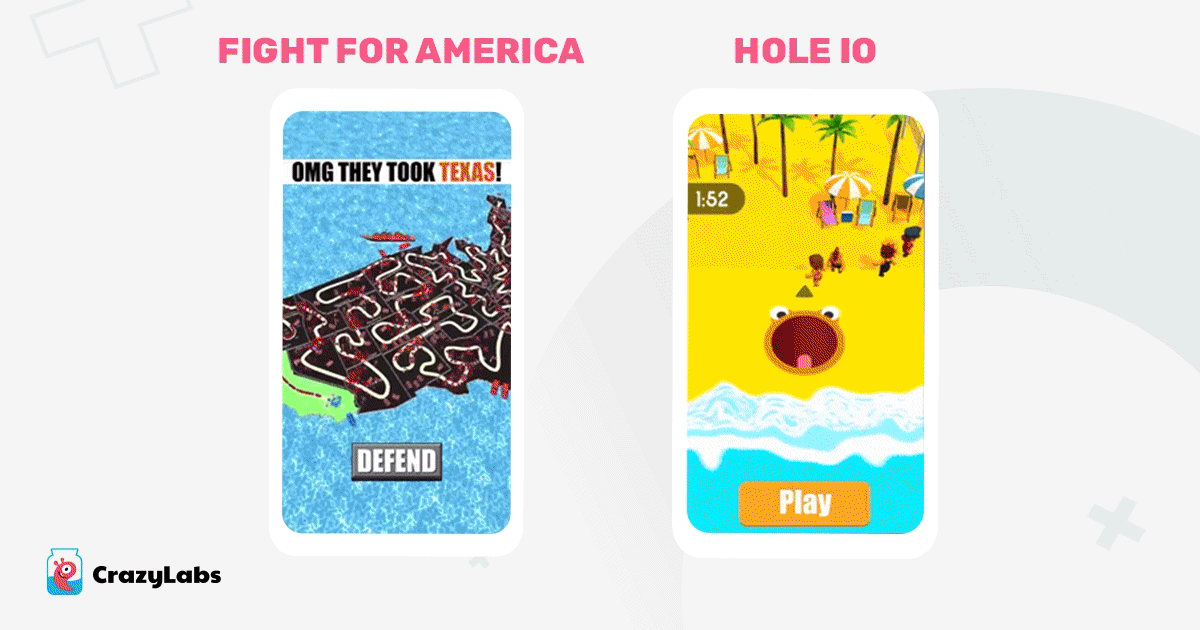
These videos leverage zoom-out cameras while showing the game map (e.g., the huge areas for defending in Fight for America, or the larger objects to ‘eat’ in Hole io) to define the game’s challenges. Additionally, when the camera focuses closely on the main character, this sparks the players’ curiosity by revealing the types of challenges that await them in the game (which they initially saw at the beginning of the creative).
Another way to define the game’s goal is by creating a ‘cinematic’ style intro. This constructs a quick backstory in the first 3-5 seconds, focusing on clarifying the upcoming gameplay. Using this condensed narrative approach works especially well for puzzle games, where developing an extensive storytelling concept can prove more difficult.
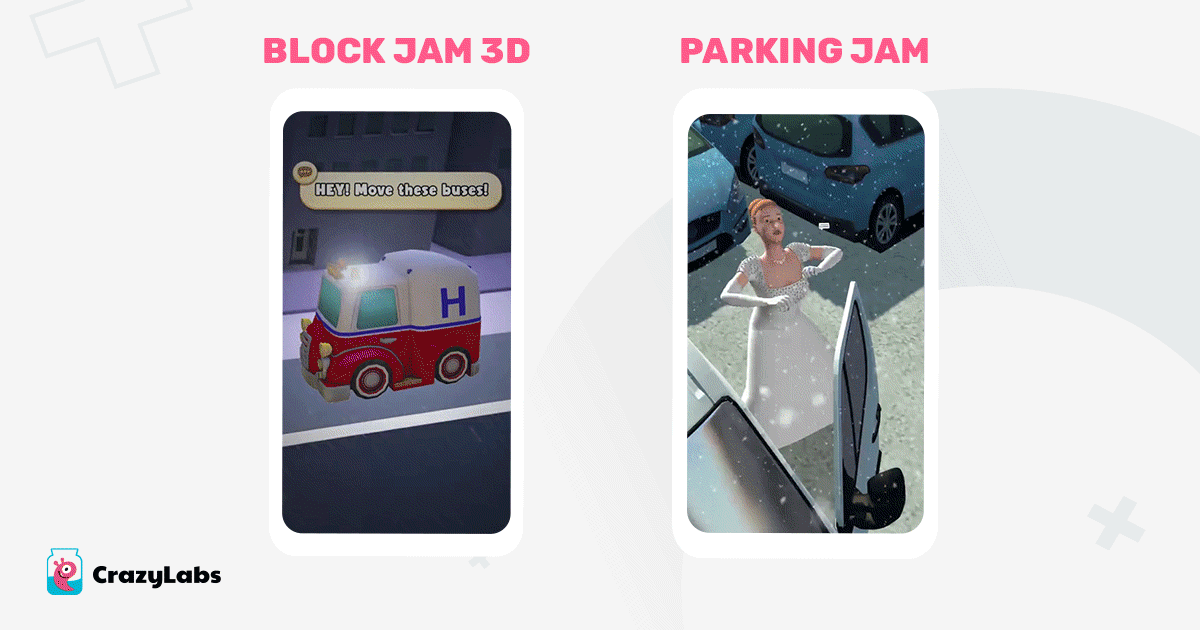
These two videos also start by defining the problem for the player to solve. Presenting the issue in the first 3-5s of the video helps players clearly understand the goal: ‘Solve the puzzle to help the ambulance/bride get there on time for the hospital/wedding.’ Creating a short dramatic story based on real-life events (like traffic problems, weddings, child births, etc.) can connect better with more people than going with something more abstract. Additionally, adding a ‘time pressure’ scenario where users feel an urgency to meet a deadline (e.g., the ambulance and bride shouldn’t be late) also increases the player’s motivation to solve the puzzle quickly.
- Experiment with Reskinning: Changing the environments is a popular trick in hyper-casual games. This involves altering textures/materials (e.g. stone, wood, grass) on the main game elements or adding simple decorative assets. For hybrid games, reskins can be more intricate as it replaces not just textures, but selects entirely new theme-related assets and locations. For example, one creative might showcase a forest world, while another creative for the same underlying game features a farm world instead, along with different characters and gameplay components tied to that theme.
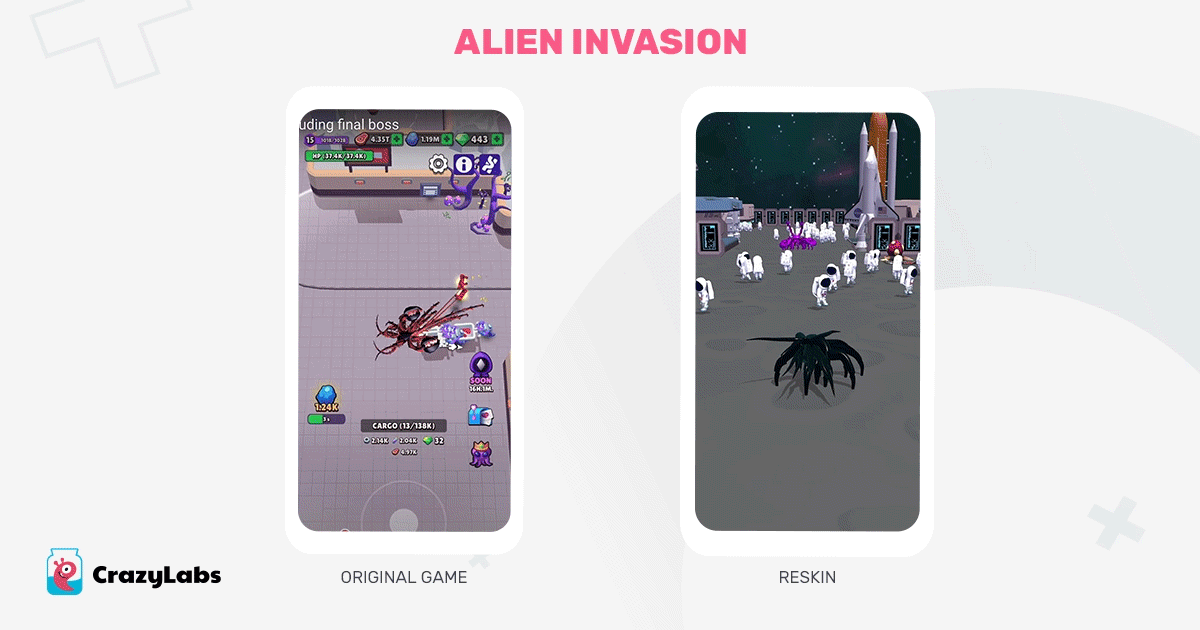
The creative’s theme was changed from an original laboratory setting to a moon invasion scenario. Additionally, the main character and his enemy originate from the original game, whereas the newly caught character and redesigned environmental elements were created specifically for this creative.
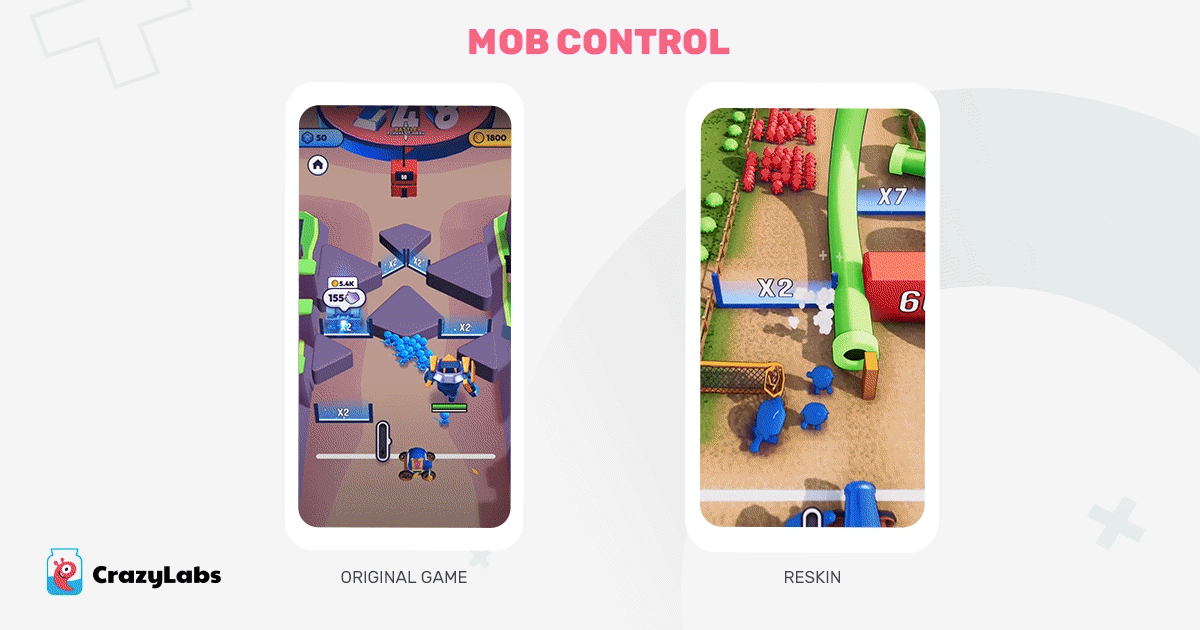
This is a less aggressive example where the main gameplay elements (e.g., characters and gates) originate from the actual game, but the location is more specifically defined and less abstract compared to the game.
Over to you — apply these tips to enhance your hybrid-casual creatives and unlock greater user acquisition reach and profitability.

